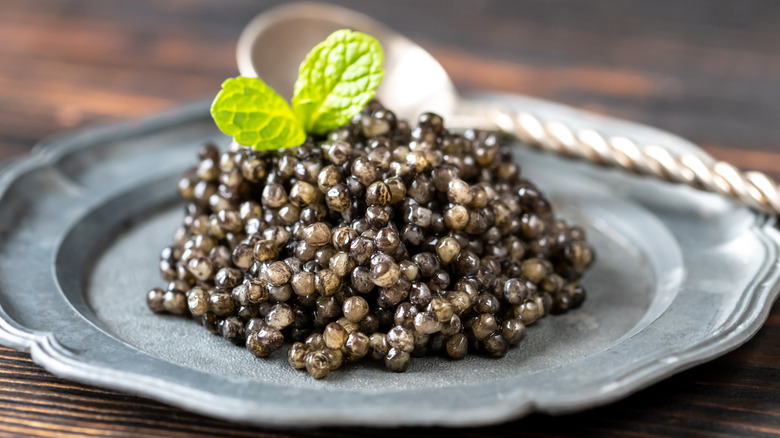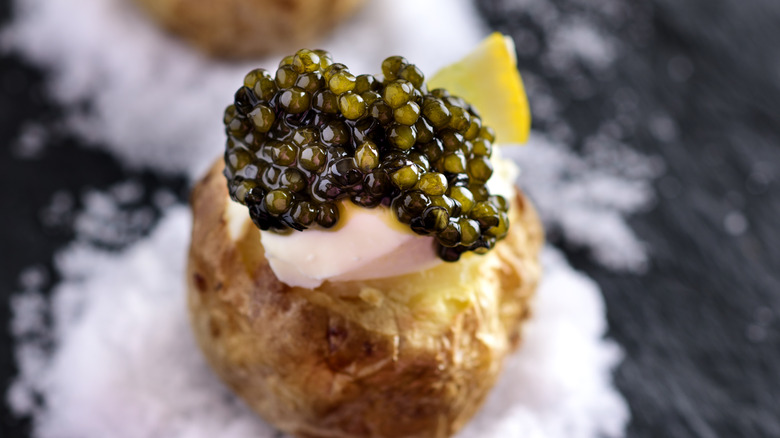This Is The Best Caviar To Try For Beginners
The concept of chowing down on fish roe might be challenging for some eaters to wholeheartedly bite into. We consulted Matt Baker, executive chef and owner of Gravitas, a fine-dining restaurant in Washington, D.C. for some helpful encouragement for those who haven't tried caviar before. "I believe that when trying something for the first time, you should experience the best version to truly appreciate it," he advises. "With that in mind, I recommend trying a true osetra caviar."
Caviar is actually an umbrella term used to encompass a variety of fish roe. For round, chewy orbs to classify as caviar rather than just roe, however, the eggs must be taken from sturgeon fish. Diners can observe the hue and size of roe to gain information on the kind of caviar served. Since sturgeon can survive in a variety of climates, the colors of osetra eggs can vary, yet biting into osetra caviar yields a particularly satisfyingly savory pop. The tasting notes of this sturdy type of caviar can include buttery crispness and a decadent nutty earthiness. Compared to beluga caviar, osetra won't put as big of a dent into your bank account. But it is among the three true top-quality types of caviar available, which are beluga, osetra, and sevruga.
Preparing your palate and your pocketbook
Though it might be tempting to start by ordering the cheapest caviar, it's worth heeding Matt Baker's expert advice. His reasoning for going for osetra is that the goal is to cultivate an appreciation for this unique ingredient, instead of acquiring a repulsion early on. You can buy an ounce tin of osetra for around $65, but prices vary wildly between brands.
After diving into the world of caviar, if you decide you like it, you may want to open your wallet a bit wider to try the famed beluga caviar. When compared to osetra, which can be a golden hue, beluga caviar is darker in appearance, and the eggs are commonly larger than those of osetra sturgeon.
Beluga is known to offer diners a more complicated and layered flavor, and tasting notes can vary from buttery sweet to savory and creamy. The ingredient is salt-cured before packaged and sold. Because beluga caviar isn't as easy to come by — it was banned in the U.S. due to over-fishing – the cost is one of the priciest around. There are now U.S. breeders farming beluga caviar in Florida, however. Yet beluga can still cost thousands of dollars per ounce in the U.S., depending on the brand. The price tag on this baby is admittedly a deterring factor, so keep Baker's advice in mind as you browse menus and ready yourself to journey into the sometimes divisive culinary landscape of caviar.

